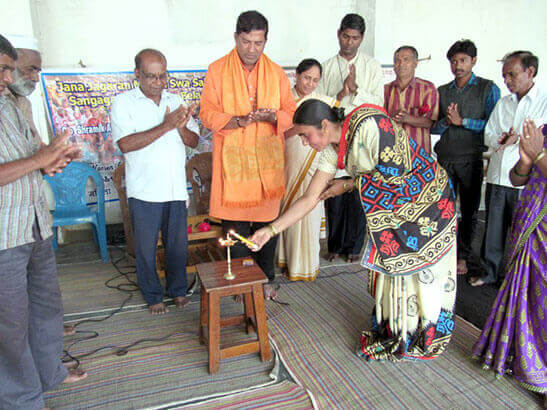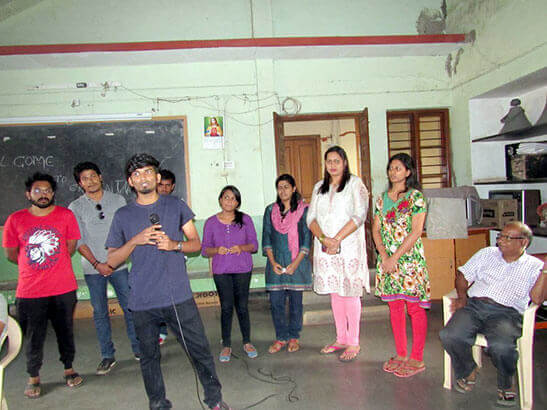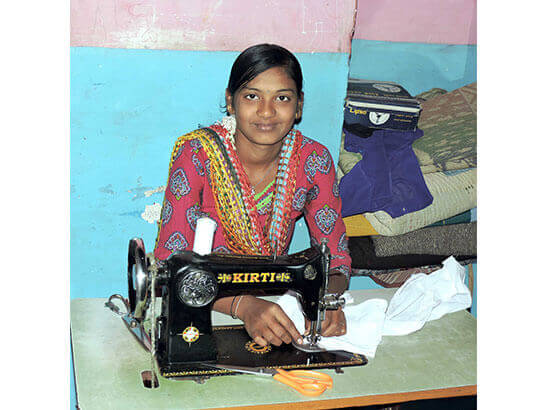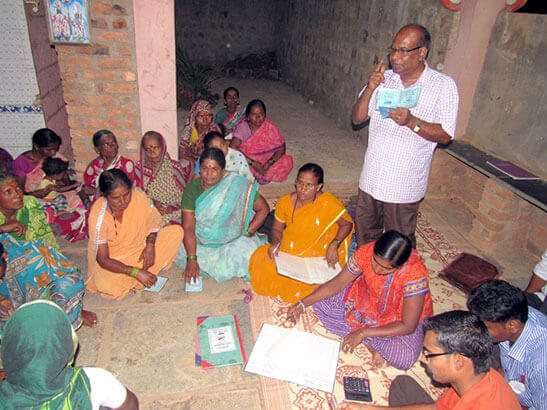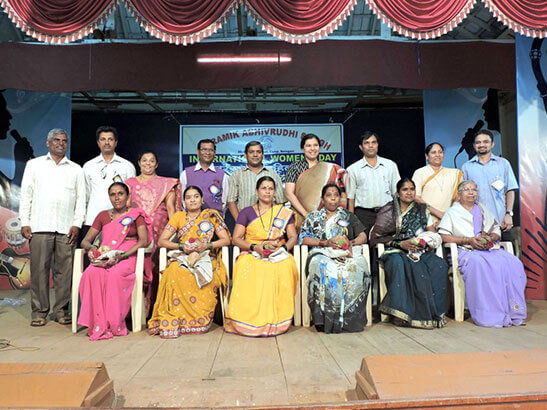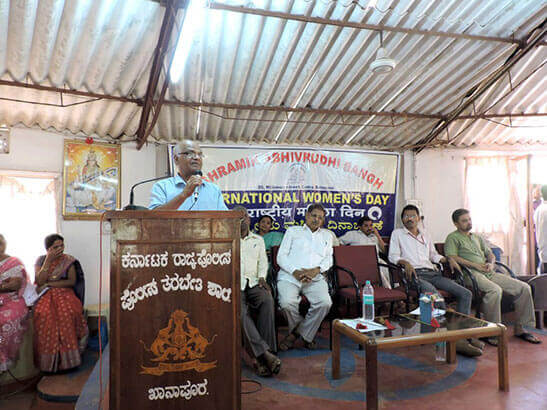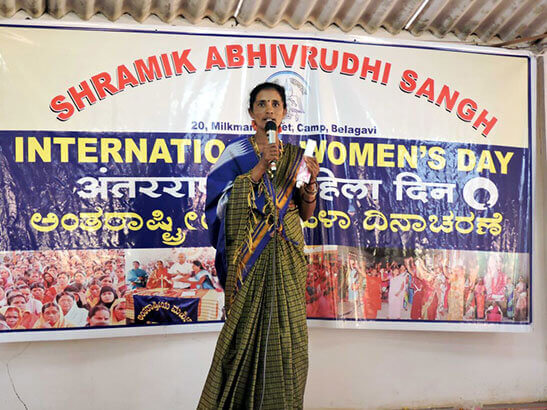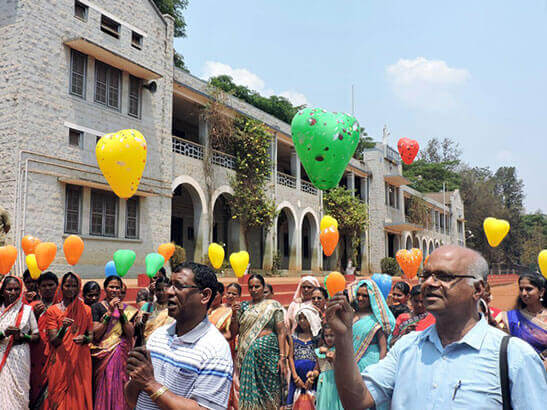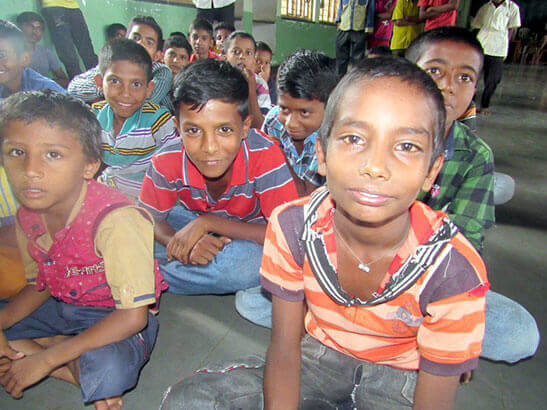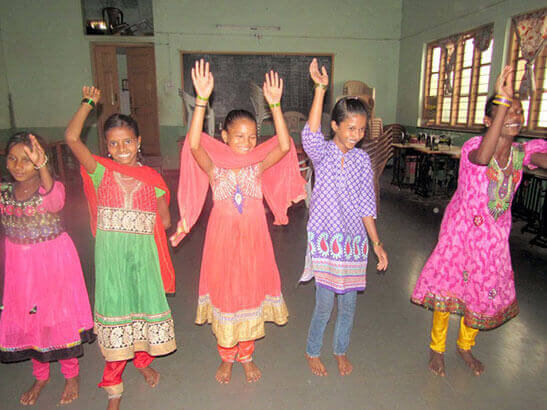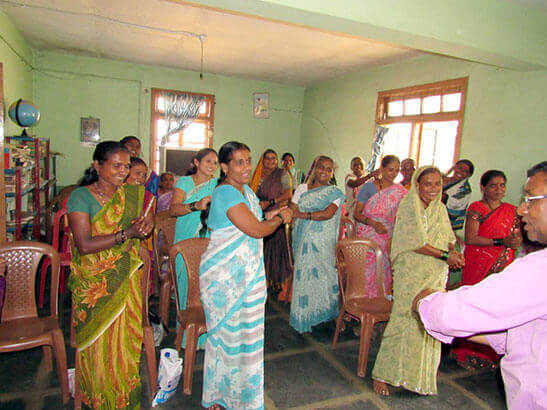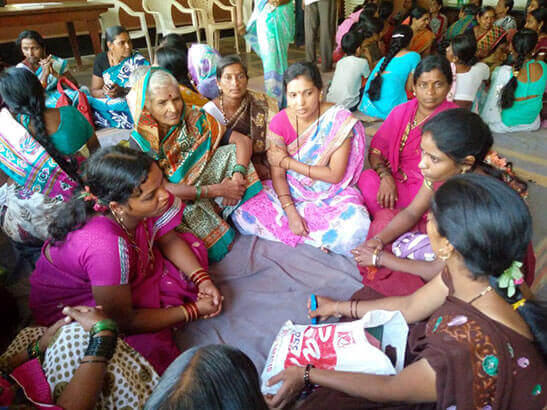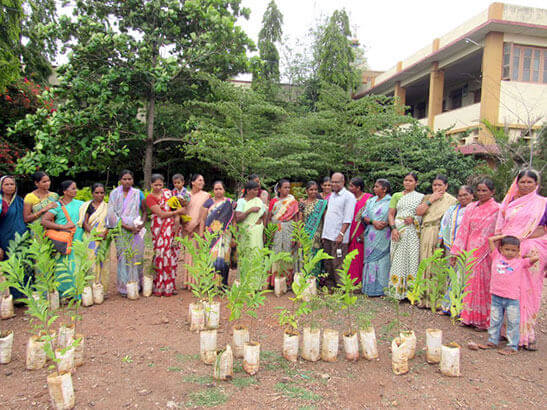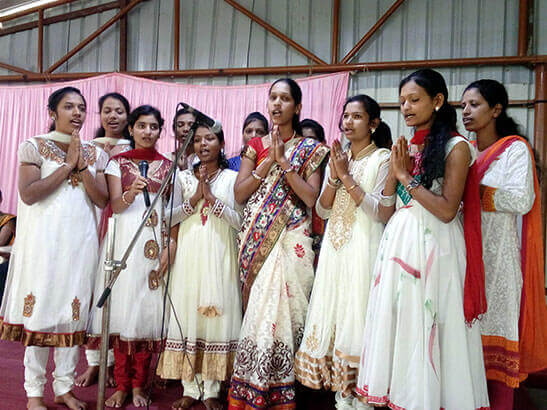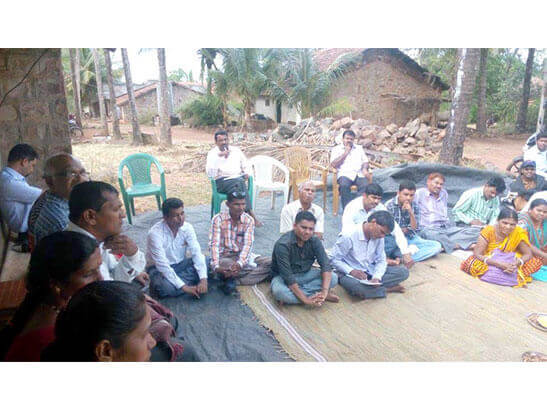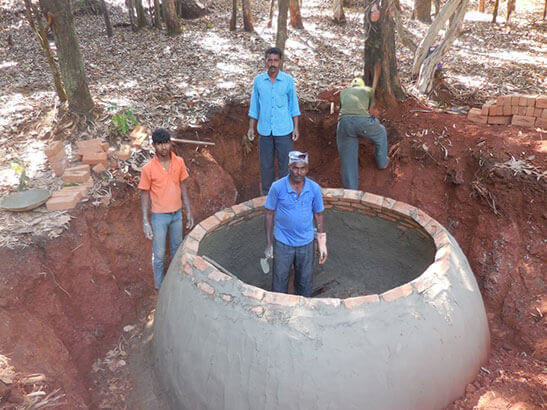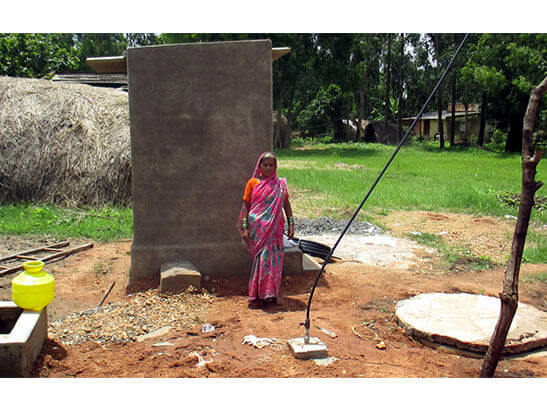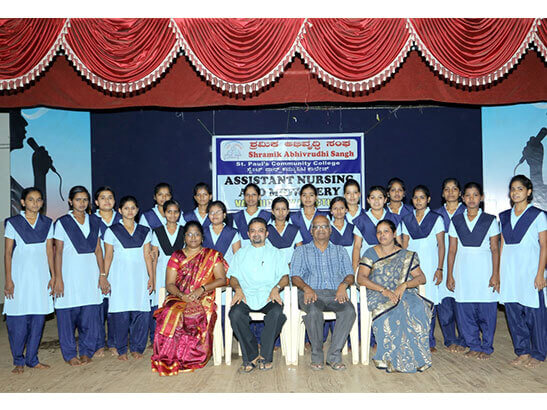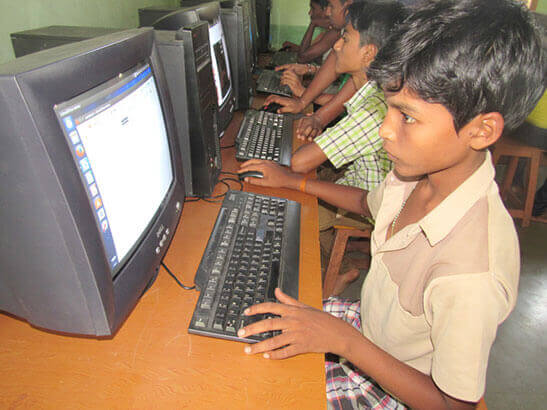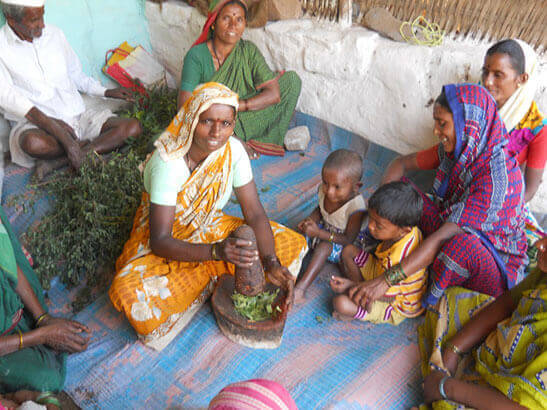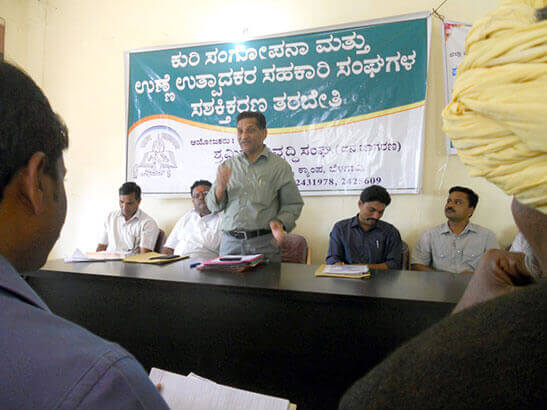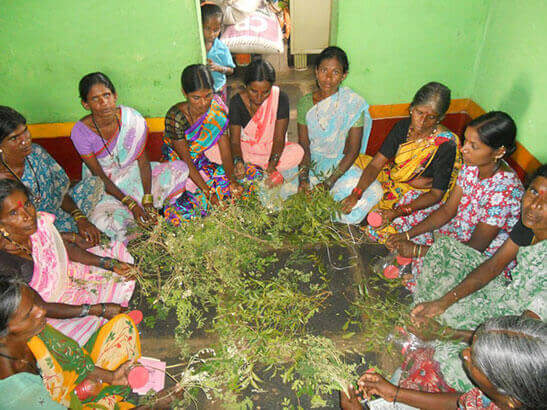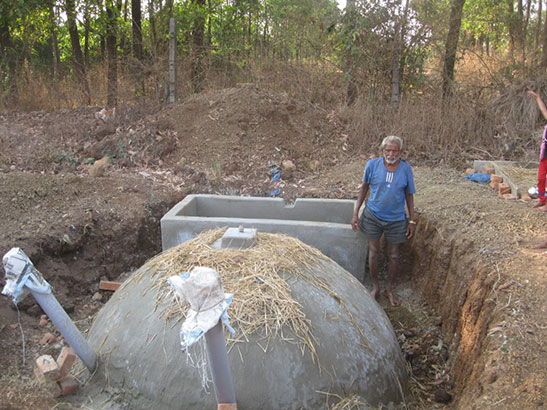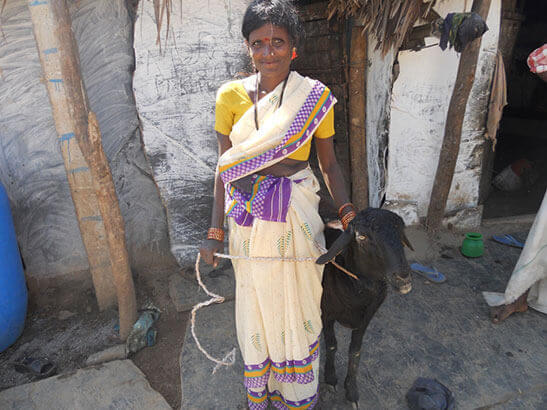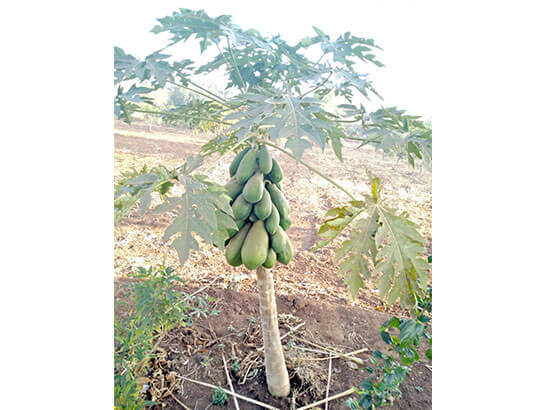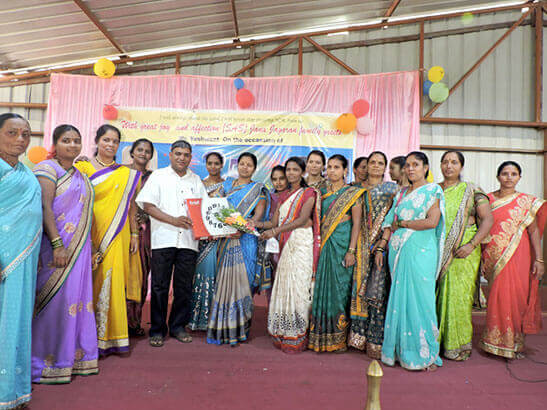MICRO WATERSHED MANAGEMENT
SAS’s vision here is ‘water harvesting' for a green and healthy environment with enhanced income generation opportunities and a united village community’.
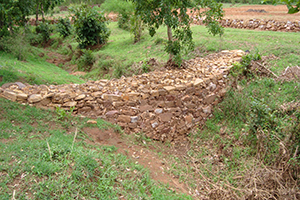 |
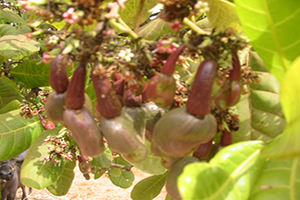 |
|
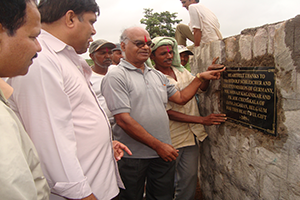 |
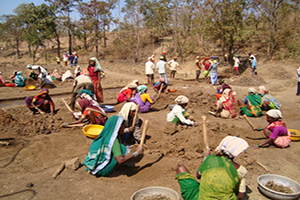 |
|
|
A case Study of Work done by (SAS) Jana Jagaran at Kattanbhavi and Ningenhatti, Taluka & District Belgaum, Karnataka, India 590001 Introduction (SAS)Jana Jagran, among other things, is experimenting with ‘watershed approach’ to socio-economic development of villages around Belgaum. Joseph Chenkala, S.J. of Goa Jesuit Province is the guiding force behind this organization. Kattanbhavi Prior to 1995, village Kattanbhavi was facing acute water scarcity. There was only one well for entire village. Literally they used to get down into the well to collect the little water left at the bottom of the well with a hand mug. The problem was so acute that girls from other places refused to be given in marriage to Kattanbhavi. Due to scarcity of water there was hardly any livestock like cows, buffalos or goats in the village. The few animals that the people owned were let loose for free grazing in the surrounding areas. There was short of employment for men and women because of poor agricultural activity. Unemployed youth migrated to big cities. For petty finance people depended on money lenders and used to pay huge interest. In 1978 Jana Jagaran started a number of adult education centers for the illiterate youth in the village and slowly built good rapport with the people. To convince the people about the ‘watershed approach’ to development they were taken to Ralegan Siddhi in Ahmadnagar by Jana Jagaran. The conditions of Ralegan Siddhi before Anna Hazare started work were similar to that of Kattanbhavi. The villagers visited the watershed work of Ralegan Siddhi and similar type of work done by Jesuit Fathers of Social Centre, Ahamadnagar. They were impressed and inspired by the work carried out by Shri Anna Hazare and the Jesuits. So the villagers decided to take the guidance and help of Jana Jagaran. In1994 Jana Jagaran started ‘watershed’ in Kattanbhavi with the help of Prokur Jesuiten Mission and Mr. Rudolf Schleicher, Germany. Some of the families in the village took up tree plantation in barren waste land as well as in private land. There were many wrong concepts about tree plantation in the minds of villagers, viz., after plantation the government may acquire the land. With Jana Jagaran’s support people came forward to plant trees. In the hill slops of Kattanbhavi ‘Continuous Contour Trenches’ were dug by using indigenous method (A-Frame). Problem arose as to who would pay the wages. ‘Jana Jagaran’ came forward to extend the financial support and paid the villages for their labour. In the trenches thousands of trees were planted. Problem arose of protecting the trees. For that a local committee was formed. Open grazing was stopped. When the trees started growing, people experienced the changes in and around the village. Slowly the only well, on which entire village depended, started recouping water. Even in peak summer the well had water. There was a small natural pond near to the well. The villagers de-silted and made it deeper and larger. That stored plenty of water in the pond and it catered to the cattle of the village and recharged the village well. Because of the watershed program and tree plantation the village had thick green coverage with biodiversity. Verities of birds, including peacocks and peahens, insects, animals such as wild boars, bison, and even a cheetah were spotted. Because of planned watershed program agriculture improved. Due to fodder availability people stopped free grazing of animals. They purchased good quality cows, buffaloes and goats. Prior to 1995 milk collection in the entire Kattanbhavi village was just 30 lit/day. In 2014 it was 1500 lit/day. The village has two co-operative societies for collecting milk. Every family has dairy animals. The households were motivated and helped to construct biogas plants cum toilet units. Now in Kattanbhavi 100% households has a biogas plant cum toilet unit. This intervention gave plenty of enriched organic manure for agriculture and easy and efficient fuel for cooking and a clean toilet for every family and it helped them to save their time and energy spent on collection of firewood and felling of trees. It also helped people to come together regularly and attend workshops, seminars and training programs conducted by Jana Jagaran. Societal Transformation The people were introduced to the concept of Self Help Group and Micro Finance. At present there are 20 Self Help Groups in Kattanbhavi, which are animated and supported by Jana Jagaran. Now people do not go to money lenders for finances. Self Help Groups take care of all their credit need. As a part of societal transformation people came forward to stop making and drinking of illicit liquor, and domestic violence. People took up sanitation work; the village has paved roads and gutters. Jana Jagaran with the help of ‘Prokur Jesuiten Mission’ and Mr. Rudolf Schleicher, Germany financed a new and bigger drinking water well for the village and the people dug and constructed the well - the pride of the village. Education When Jana Jagaran intervened 80% of Kattanbhavi was illiterate. Now literacy is almost 100%. There is school up to 7th standard for Kannada and Marathi medium students. Jana Jagaran had started night schools in 1978. Earlier after completing 4th standard in Kattanbhavi children discontinued their education but now practically all go to Kadoli for high school and many to Belgaum for college education. There are two communities in Kattanbhavi- Maratha and Berad. They live in harmony and work together for the progress of the village. Remarkable change is seen among women. People speak very proudly about the changes in the village. They are eye witnesses to the changes; nay they changed the face of the village and their mindset! They give credit to Jana Jagaran for what they have become and their many dreams for the future. The work is not over. Financial support from the Jana Jagaran is drastically reduced; but the process goes on with newer and bolder initiatives of the people. Fr. Joe Chenakala, S. J. Joseph Chenakala, S.J. is the Director of Shramik Abhivrudhi Sangh (Jana Jagaran) he can be contacted at jchenakala@gmail.com |
|
|
WATERSHED DEVELOPMENT Watershed Development is the name for a combination of techniques, for rainwater harvesting, undertaken for the overall development of a village. Watershed development is important for the overall development of a village. Stable agriculture was a dream when watershed development was started. But now people have realized that they can survive only if they follow this technique. Watershed development involves the integration of many techniques.
These techniques can be summarized as: Grassland Development, Gully Plugs, Tree Plantation, and Contour Trenching on hill tops and slopes, Contour Bunding and Plowing, Water Conservation Structures, Lift Irrigation Schemes, Land Leveling and others.
Main purpose is the optimum use of local resources for the betterment of the villages. Watershed development raises living standard of the people in villages.
In India only a small percentage of the cropped area is getting irrigation water. A large percentage of cropped area is dependent on rain. Adoption of in situ methods of soil and water conservation in all the villages with the help of government and NGOs can bring the villages to self-sufficiency.
Timely water supply is absolutely necessary for successful agriculture. Large flow irrigation projects are not possible for a large majority of villages. Hence watershed approach to development appears to the best way-out for rural development and sustainable agriculture.
Through watershed development, people from rural area can get economical returns from agricultural lands, waste lands, and lands along hill slopes. They can grow grass in hilly area and can use that as fodder for cattle. Farmers can go for dairy development. Marginal farmers and landless can start farm and off farm industry. In short adoption of this technique is an assured way of drought proofing, stabilizing agriculture and improving in living standards.
For adoption of this technique the villagers should come together. As watershed development is not a single point technique, they should prioritize the various initiatives taking into account the local conditions. Right choice of work and place ensures success, e.g., tree plantation is an important activity of watershed development and also the right choice of the species. Choose trees, which will satisfy basic needs of a village, like fruit, fodder, fuel and improvement of soil.
The signs of successful implementation are:
Problem in Adoption
Factors contributing success are:
|
|
DIFFERENT TECHNIQUESGrassland Development In Kattanbhavi and Bambarge the hilly area was very undulating and sloppy. Traditional agriculture was uneconomical and farmers were getting not even their seeds’ worth back. Such area was converted into green lush grassland. Traditional agriculture on hill slopes was totally stopped. Grassland helped in soil and water conservation. When there was heavy rainfall grass acted as a shock absorber and checked velocity of raindrops. This ultimately reduced chances of soil erosion. This allowed infiltration of water into the soil. Thus grassland development helped in soil and water conservation. Adoption of this technique is very simple, cost effective and this does not require any hi-tech knowledge. Grassland can be developed with the help of villagers themselves. Protection of the area with social fencing helps in natural regeneration of the local grasses. For social fencing villagers should come forward, discuss among themselves and adopt method of stall feeding for their cattle. If due to certain reasons natural grass regeneration is not good then seeds of some grasses can be spread. The results
|
|
| |
|
|
Gully Plug At Kattanbhavi an innovative method of soil conservation is adopted and it is Gully Plug. Gully plug is one of the simple methods of soil and water conservation. They play an important role in soil and water conservation, when they are constructed in series one below the other from top to bottom of the depression. Gullies are formed due to erosion of topsoil by the flow of rainwater. In course of time, a gully assumes a big shape and erosion goes on increasing. To prevent erosion, barriers or plugs of different types of material are put across the gully, at certain intervals.
The results
Tree Plantation on hill slopes along with contour trenching Soil erosion in undulating and sloppy area is very heavy. Along the spurs of the hill it is not possible to construct any type of structure. In this area sheet erosion, where a thin layer of topsoil is lost, takes place. To avoid this, the area was converted into lush green grassland. Along with grass, small trenches check the velocity of flowing water in staggered manner. Grassland and trenches have helped in soil and water conservation. When there is heavy rainfall, grass acts as a shock absorber and checks velocity of raindrops. This ultimately reduces chances of soil erosion. When water starts flowing along the slope, grass and trenches become obstruction for it. Due to the obstruction the velocity reduces and water is collected in the trenches. This allows infiltration of water into the soil.
Adoption of this technique is very simple, cost effective and this does not require any hitech knowledge. For trenching, first step is to mark contours on the slopes. The next step is to mark trenches along the contours. Then trenches are dug along the contours. Width, length and depth can be decided depending upon depth of soil at that place. Spacing of trench row will depend upon slope of land. As slope increases distance between two rows will be less and vice versa. Along the slopes grassland can be developed. Trees, which will satisfy basic needs of a village, are planted along the down stream side of the trench. The results
|
|
|
Contour Bunding & Plowing Contour bunding helps in soil and water conservation. When there is rainfall, contour bund acts as a barrier to the water flow and checks the velocity. This reduces chances of soil erosion. When water starts flowing along the field, the bund becomes an obstruction due to which velocity reduces. This allows infiltration of water into the soil. Thus contour bunding & plowing on the fields with moderate slopes helps in soil and water conservation. |
|
| |
|
|
Adoption of this technique is very simple and this does not require any hi-tech knowledge. For bunding first step is to mark contours on the agricultural fields. The next step is to mark contours. Then bunds can be taken along the contours. The height of the bund should be 0.3 Mt and top width 0.3 Mt. Spacing of bunds will depend upon slope of land. As slope increases distance between two rows will be less and vice versa. In between two bunds agriculture can be practiced. Trees can be planted on the bunds. These trees can be selected from the category that they will fix nitrogen in the soil and become useful to the crops. Soil along the sloppy fields is protected from erosion caused by flowing water. Thus work of soil conservation is done without any special hitech technique. Biomass generated along the bunds can be used as fodder and for compost. As the flow water is obstructed, rate of infiltration is increased. This helps the recharge of groundwater. Income from eroded land increases. Yield in the intercropped agriculture increases if legume plants are planted along the bund. One gets additional income from the trees in the form of fodder, nitrogen for the soil, fruits, fuel and green manure. |
|
| |
LAND LEVELING |
|
erosion. Water starts flowing slowly along the field. Slow infiltration augments the ground water table. The people, who have undulating land, can adopt this technique. Unless the land is leveled, efficient water application to the crops is not possible. Conservation of in situ soil and water boost up production. Irregular, uneven lands can not hold soil moisture and so land leveling is necessary. Stripping of the mounts and filling the depressions is the main object. Terracing the land with required height of soil and stone bunds at suitable contours is also necessary. The land between two bunds is leveled with the help of bullocks or by some machine. Upper part of the field is excavated and filled in the depressions. It is important to provide a waterway to drain out accumulated water. These drains can be provided on the excavated side.
|
|
|
WATER CONSERVATION STRUCTURES
Water conservation is important from the agricultural point of view. Storage of water is an essential part of the watershed development. Targeted food production can be had only if crop water relationship is fulfilled at appropriate time. Water conservation works are basically small dams with height not exceeding 3-5 Mt. The object of water conservation structure is to create a barrier to the flow of water and to impound water against this barrier and make use of it through the wells on the down stream side. The purpose of such a structure is to provide water for drinking, domestic use and agriculture.
Water conservation structures can be divided into certain groups as under: Earthen water conservation work, Masonry water conservation work with or without gates, Underground/dug out dam as water conservation work, and Timber crib water conservation work. In most part of India agricultural is rain fed. Very often there is loss of yield due to shortage of one or two watering. To remedy this situation it is important to build water conservation structures. Government is executing these works as an infrastructure development activity. In some area people came together for building of small dams. |
|
|
To increase national income, government is doing water conservation works at various places. Some times dependence only on government does not help. In villages like Kattanbhavi and Ghuramatti, Shramik Abhivrudhi Sangh (Jana Jagaran), a local NGO, with the help of local people, is engaged in construction of water conservation structures. People contribute some free labour for this work. People are doing these things only because they realize that with a little input of water their agriculture can be stabilized and |
|
| they will get water when it is needed most. The drinking water problem too is automatically solved.
Adoption of this technique is not as simple as in the case of the earlier techniques. Construction of a water conservation structure requires a technical person to prepare design and estimates of the structures. For planning and execution local people's involvement is most important.
At first topographical survey of the area is done. For this work local people with a little training in surveying are useful. The location and height of the structure can be decided after discussions with the local people. The design and estimate follows. After getting approval to the technical part of the structure, actual construction work is done. Local people and local artisans can do this work.
Results
Dam allows more time for water to percolate into the ground and thus helps in recharging the ground water table. Income level from semi arid agriculture land is increased. Silt accumulated in the structure can be used for nursery plants or can be used in the fields for increasing organic matter in the fields.
|
|
| |
LIFT IRRIGATION SCHEME
In some of the villages where water conservation structures are carried out, lift irrigation schemes are needed to provide water to the fields at higher level. In this work, the distribution part is important. Water can be lifted from wells, rivers and irrigation tanks. The farmers whose fields are situated at higher level and have a source of water nearby can adopt this technique. Farmers with fields at
|
|
higher level and for which water by flow irrigation is not possible, have no other alternative but the lift irrigation scheme. Adoption of this technique is not very simple. Planning, designing and execution are to be done through knowledgeable technical persons. Fr. Joe Chenakala, S. J. Joseph Chenakala, S.J. is the Director of Shramik Abhivrudhi Sangh (Jana Jagaran) he can be contacted at jchenakala@gmail.com |
|


